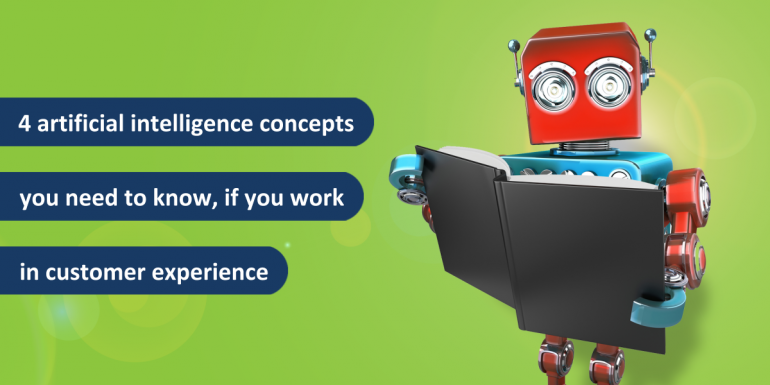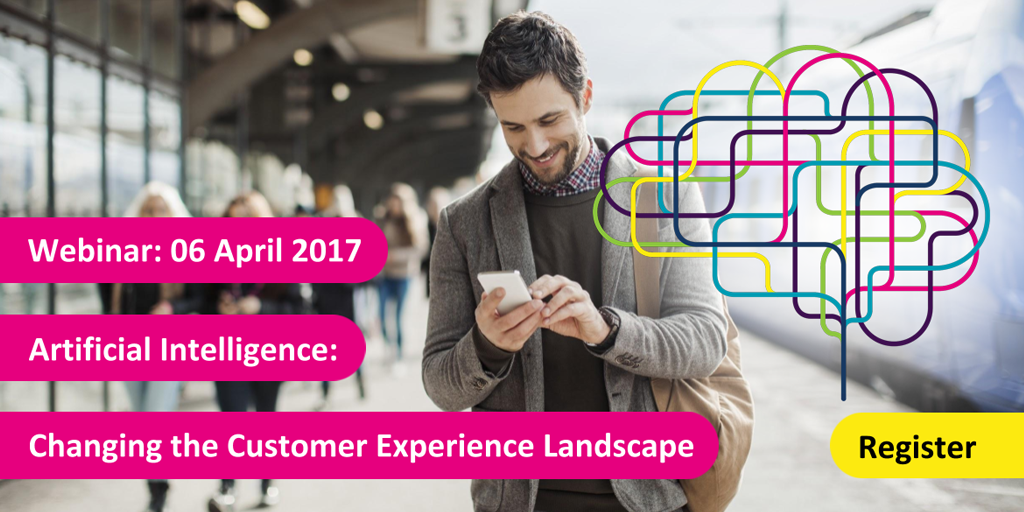4 artificial intelligence concepts you need to know if you work in customer experience

Following last week’s blog introducing artificial intelligence (AI) and explaining the difference between bots and chatbots, in my next two posts I want to explore the types of AI and how they can be applied in customer experience. Firstly, here are four key terms that you need to know - in the next post I’ll look at four more:
1. Linguistics
Linguistics is the scientific study of language. It doesn’t solely apply to artificial intelligence, with many linguists analyzing the social, cultural, historic and political factors that influence language and how it is used by different groups.
It has two main branches:
- Semantic, which studies the meaning of a word or sentence
- Syntax, which studies the structure of a sentence and its composition
Language is deterministic, as it always has the same components, which is why linguistic techniques are particularly good for customer experience, as they can learn to understand language as humans would – in context of a sentence, rather than just through keywords.
At Eptica, our innovation team comprises linguists that constantly improve our natural language processing engine to enrich our dictionaries, ensuring that they cover concepts linked to providing customer service across all verticals and major languages.
2. Machine learning
Machine learning is a way for devices, such as bots, to learn without being explicitly programmed. Essentially it means the system is capable of self-learning based on its own experiences. However, ‘training’ machine learning systems requires an enormous amount of data, and it can take a long time for such a system to improve and evolve.
It is essentially a statistical approach to creating artificial intelligence with answers varying over time as the system evolves. When applied to CX it means that it provides the most frequent answer analyzed to date - which does not mean it is the correct answer. A good example of machine learning going wrong was Microsoft’s Tay chatbot. Launched on Twitter, people quickly realized that the technology learnt from their interactions, and unscrupulous users quickly taught her to spew out inappropriate racist, sexist and otherwise offensive responses. Needless to say Microsoft swiftly removed her account from Twitter.
3. Natural Language Processing (NLP)
In contrast to machine learning, Natural Language Processing (NLP) adopt a deterministic approach. This means you always get the same output from a given start point – so you will always receive the same answer based on an understanding of the customer’s request. As the name suggests it is based on the study of language (linguistics), applying artificial intelligence to understand inputs (such as an email) and then providing the best possible answer. NLP is based on understanding language as naturally as a human would if you were having a conversation with them. So it looks at the context and the tone (sad, happy, angry), rather than just picking out keywords.
Whether you adopt machine learning or NLP techniques depends on what you want to achieve. When it comes to customer experience NLP delivers the best results as consumers’ questions are deterministic – i.e. someone asking a specific question should always be provided with the same, consistent answer. NLP understands the question, based on the language the consumer is using, and searches a knowledge base to deliver the best response to that individual question. That’s why Eptica’s technology is based on NLP and a centralised knowledge base.
Machine learning is more applicable to situations which are changing and evolving. The only place that Eptica uses it is to help analyze the choices of agents when they are presented with multiple answers to a query, learning from their selections to improve the responses provided in the future.
4. Semantic technology
As mentioned above semantic is a branch of linguistics that understands the meaning of what you are saying by looking at its context. Take these two examples that could apply to customer service:
- My laptop gets hot quickly
- My boiler gets hot quickly
Clearly, in the first case there is a potential product issue that needs fixing, whereas in the second it demonstrates that the boiler is doing its job properly. There are countless other examples, particularly when looking at real-life language which might include slang or different ways of referring to products or services.
At Eptica we use semantic technology to understand the context of digital customer requests. This is vital if bots and agents are to know what a customer really means, and to then respond accordingly with the right answer to them.
In my final post I complete my round-up of key terms and explain in more detail how AI can be applied to customer experience.
We also invite you to join us for this webinar to find out how conversational & collaborative solutions powered by AI can enhance digital CX, enabling companies to put customer experience at the heart of their strategy and create value across all operations:








Comments